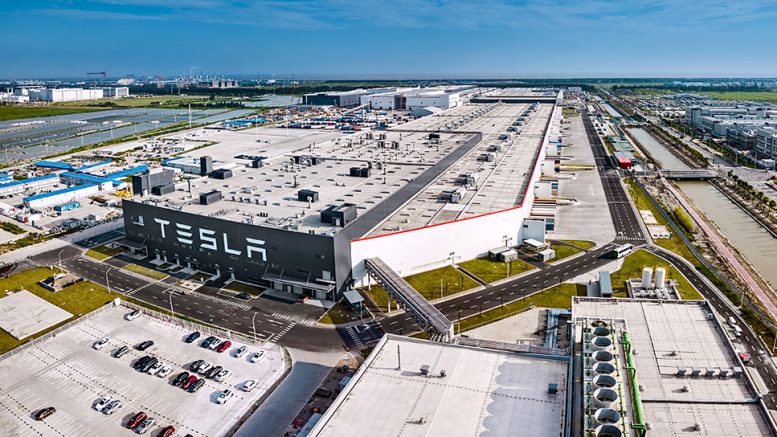The transition to electric vehicles could take a decade or two but demand for the key metals in batteries and energy storage systems will only continue to grow as the shift to a greener future gains traction.
China currently leads the world in EV and battery production. The latest statistics from China’s Ministry of Industry and Information Technology, according to BMO Capital Markets, show that sales of new energy vehicles (NEVs) in February were 585% higher than the same month in 2020, and the country’s production of lithium-ion batteries jumped 108% year-on-year to 18.25 billion units annually in the months of January and February.
The U.S. wants to catch up. Under U.S. President Joe Biden’s US$2.3 trillion infrastructure renewal and job creation plan announced last week, US$174 billion has been earmarked for EVs. Some of the money will be spent on tax credits, rebates and other incentives for consumers, businesses and government that will lower the cost of EVs; and some of it will be spent on helping to build a network of 500,000 public charging stations by 2030. It also calls for procuring EVs for federal agencies, such as the Postal Service.
In addition to EVs, US$620 billion will be spent on transportation infrastructure for highways, rail and roads, and about US$100 billion for modernizing the electric grid. The plan also calls for a “Clean Electricity Standard” – which would set requirements for zero-carbon energy sources for utilities by 2035, a move that would rein-in fossil fuel use and boost renewables such as wind and solar to fight climate change. There is also money for research and development and tax credits for clean-energy producers for generation and storage.
“I’m convinced that, if we act now, in 50 years people are going to look back and say this was the moment that America won the future,” Biden said. “It’s a once-in-a-generation investment in America unlike anything we’ve seen or done since we built the interstate highway system and the space race decades ago. In fact, it’s the largest American jobs investment since World War II.”
Whether Biden’s ambitious new deal is passed in its current form, and when, remains to be seen. The plan proposes tax increases that would pay for the deal over a 15-year period, including raising corporate taxes to 28% from 21%, and opponents like Republican Senate minority leader Mitch McConnell have said they will oppose it “every step of the way.”
But even if concessions are made and only some of his proposals eventually make it through Congress — it will still be good news for mining companies that produce key battery metals like cobalt, lithium, and nickel; and those mining copper and rare earths.
“The adage of ‘if it can’t be grown it must be mined’ serves as a reminder that electric vehicles, transitional energy, and a green economy start with metals,” mining analysts Mike Kozak and Matthew O’Keefe of Cantor Fitzgerald wrote in a research note in late January. “The supply chain for batteries, wind turbines, solar panels, electric motors, transmission lines, 5G — everything that is needed for a Green Economy starts with metals and mining. Demand for these metals, principally lithium, nickel and cobalt on the battery side and copper, uranium and rare earth elements on the energy side is expected to rise rapidly.”
Kozak and O’Keefe forecast EVs will make up about 15% of new car sales by 2025 and that this figure will double to 30% (30 million EVs) by 2030. They also pointed out that EVs “require approximately 180 lb. copper per vehicle,” which is three times more than the roughly 55 lb. copper that is required in an internal combustion engine.
The analysts also see rising demand for ethically sourced metal will lead to direct investments in mining companies. “For security of supply as well as transparency and traceability of material supportive of clean/ethical brands, we expect original equipment manufacturers (OEMs) will need to look to direct investments in mining companies to secure an ethical supply or risk being left behind,” they argued in the 43-page report. “This will likely take various forms including off-take agreements at established floor prices, direct investment at the project level and debt and equity financing at the corporate level.”
Where will the bottlenecks in metal supply emerge, however? A recent UBS report forecasts deficits emerging for nickel this year; for rare earths in 2022; for cobalt in 2023; and for copper, lithium and natural graphite in 2024.
The Swiss multinational investment bank also predicts the size of the deficit by 2030 for each of the metals: 170,000 tonnes for cobalt; 10.9 million tonnes for copper; 2.1 million tonnes for lithium; 3.7 million tonnes for natural graphite; 2.2 million tonnes for nickel; and 48,000 tonnes for rare earths. These deficits, as a percentage of the market, are as follows: 42% for cobalt; 31% for copper; 50% for lithium; 37% for natural graphite and nickel; and 47% for rare earths, according to their estimates.


Be the first to comment on "Battery and ‘green’ metals brighten outlook for mining sector"